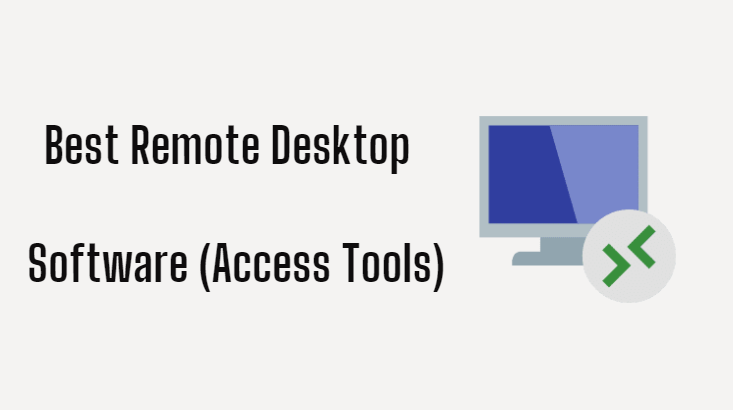Reviewed by: Jayprakash Prajapati | Last updated on November, 14, 2025
Best Practices for Employee Selection Process in Small Businesses. The employee selection process is a critical aspect of building a successful small business. In a competitive landscape, hiring the right talent can significantly influence a company’s growth and culture.
Small businesses often face unique challenges, such as limited resources and the need to compete with larger organizations for qualified candidates. Therefore, implementing effective practices in the selection process is essential.
Start by clearly defining job requirements and crafting compelling job descriptions that reflect the company’s values and culture. Utilizing psychometric assessments can help in evaluating candidates’ compatibility with the role and the organization. Additionally, leveraging personal networks and employee referrals can enhance the recruitment process, tapping into a pool of potential candidates who may be a good fit.
Structured interviews and consistent evaluation criteria ensure that all candidates are assessed fairly, allowing for informed decision-making. Furthermore, providing a positive candidate experience throughout the hiring process can enhance the company’s reputation and attract top talent. By adopting these practices, small businesses can optimize their employee selection process, ultimately leading to a more engaged and productive workforce.
It is a primary segment for human resources, in which it has to give everything in its entirety. It helps a lot for HR to shortlist the candidate. There are many things that I want to highlight.
What is the Best Recruitment Strategies Of 2025
The best recruitment strategies combine employer branding, targeted job ads, employee referrals, and social media outreach. Using data-driven tools to filter top talent and optimizing job descriptions for clarity boosts quality hires. Engaging passive candidates through LinkedIn and offering internship-to-hire programs also widen the talent pool. Consistent communication, a streamlined hiring process, and a strong onboarding plan ensure candidate satisfaction and long-term retention.
1. Preliminary Interview.
If the Recruitment Strategies program is non-selective, the preliminary interview is likely to be used in selection. This interview is short, often lasting for ten-fifteen minutes. The basic purpose of the preliminary interview is to determine an applicant‟s suitability for further consideration.
The kind of work available in the enterprise is explained by the interviewer. If there is felt a chance of successful placement, the applicant is allowed to continue the rest of the selection procedure.
2. Application Blank.
It is commonly used in the selection process. Questions like work history, education level, work experience, and the type of work applied for are asked in the question blank. Application blanks certain questions related to the probability of job success.
3. Psychological Test.
Most psychological tests administered in the enterprise are paper and pencil. The test taker is given a series of questions and a choice of two or more possible answers to each question.
- Aptitude Test: This is a test measuring the intelligence of the applicant and his ability to learn certain skills. And next, let us look at three small aspects.
- Performance Test: It is a test that measures one’s current knowledge of a specific test.
- Personality Test: Under the test, an applicant’s personality traits such as dominance, sociability, and conformity are measured.
- Interest Test: As the name of the test itself denotes, this is the test that measures one’s interest in various fields of work.
4. Reference.
Personal references are usually unreliable and biased. Many times the reference is not well qualified to judge the performance of one’s previous work. Therefore, the names of previous employees and teachers are considered more reliable and fair in judging one’s past experience/performance.
5. Interview.
Interview facilitates an interviewer to evaluate more effectively the applicant’s potential for success in a particular job. The basic objective of an interviewing device should be to measure those facilitating qualities and traits that cannot be better measured by some other devices like testing or application blank.
6. Physical Examination.
A physical examination is usually placed towards the end of the selection process. It gives the enterprise current information about the applicant’s physical health at the time of selection or hiring.
7. Placement.
Once a new employee is selected, he is eventually placed to perform a specific job. A newcomer should be properly introduced to his fellow workers, shown the location of facilities available, informed of regulations if any, and encourages asking any needed information.
8. Orientation.
The employees selected should be made familiar with their enterprise’s objectives and activities and acquainted with their jobs. Thus begins their orientation period to learn about their work environment. Henceforth starting the training and development of newly selected employees.
Training and Development: Training may be defined as any procedure, initiated by an enterprise, which intends to foster and enhance learning among the employees working in the enterprise. Training in the small-scale units is concerned, the owner himself takes the responsibility for developing and conducting the training program with an objective to enhance the employee’s job-related skills and knowledge.
Objectives of Training.
- To improve job performance by enhancing employee’s knowledge and skill.
- To prepare employees well competent to discharge the new responsibilities.
- To impart skills on how to operate the new machinery and types of equipment.
- To reduce wastages and accidents.
- To build a second line for a more responsible position at a later stage.
Characteristics of a Successful Training Programmer – HR
- Its objectives and scope are clearly defined.
- The training techniques are related directly to the need and objectives of the organization.
- It employs accepted principles of learning.
- As far as possible, it is conducted in the actual job environment.
9. What is the training method candidate?
The Job Training: The oldest and most commonly used training technique in small-scale units is on-the-job training. Staff is getting training from their supervisors and other departmental members while they carry out their regular tasks. Such training is considered essential in every job available in the enterprise. Job training has three categories:
- (A) Demonstration: The job is demonstrated to the employees and each step involved in the process is explained thoroughly.
- (B) Performance: The trainees perform the task that they have learned in step one.
- (C) Inspection: In the third and final step, the work performed by the employees, as mentioned in step two, is inspected and immediate feedback of the job performance to the employees.
I would like to highlight some points of employee selection below.
1. Apprenticeship Training: Apprentice training combines both formal classroom learning and on-the-job experience. This kind of training program is provided mainly in technical cadres.
2. Job Rotation: This kind of training is particularly beneficial in the case of small-scale industries where each employee has a thorough understanding of the different functions performed in the enterprises. In this training program, employees are moved from one job to a job for a few hours a day, a few days, or several weeks.
3. Outside Training: The outside training consists of the employees being trained at schools/institutes outside the enterprise. Training is a continuous process of employee development. Remuneration and Benefits: The remuneration of employees expressed in terms of wages is a matter of significant concern for personnel relations in the small scale industry, while wages represent employees’ income, they represent employer costs and potential taxes to the government.
Wages are the largest part of an employee’s purchasing power and therefore have a significant impact on the level of economic activity. As regards, labor is organized (i.e.) in a large industrial area, politically awakened and ready to protest in order to preserve its rights. In a small area, wages are around one-half of the big ones.
The organized sector through labor productivity is not so different between them. Higher wages in the organized sector have been described as “islands of prosperity” than “oceans of crisis in small areas”. Wages in small enterprises are not fixed on well-established norms and principles of equal pay for equal work. In fact, salary fixation is usually based on the bargaining strength of the employer and the employee with the former dominating the scene.
Even knowing the wide difference in wages between the two sectors, an employee of the small actor unorganized sector, are not in a position to voice their concerns effectively due to their poor bargaining strength.
10. Employee Benefits and Services.
In addition to remuneration (i.e.) wages to the employees for their work done, enterprises nowadays also pay for a wide variety of supplementary items – often called fringe benefits. These benefits are the indirect payments made to the employees in addition to their direct wages and salaries. The employer’s federation of India considers fringes as those benefits provided by the employer
(A) Which materially add to the welfare of the employees either during the tenure of their service or their retirement?
(B) The expenditure of which does not form part of his normal wages and other allowances. Days are gone when the fringe benefits
Were of secondary importance. Over the period, these benefits have risen to such an extent but these now command a significant proportion of the total employee compensations. All the fringe benefits can be broadly
Conclusion.
Implementing effective practices for the employee selection process is essential for small businesses aiming to build a strong and capable workforce.
By clearly defining job requirements and crafting compelling job descriptions, businesses can attract candidates who align with their values and goals.
Utilizing psychometric assessments and structured interviews further enhances the selection process, ensuring that the right candidates are chosen based on both skills and cultural fit.
Additionally, leveraging personal networks and fostering a positive candidate experience can significantly improve recruitment outcomes.
Regularly evaluating and refining the hiring process allows small businesses to adapt to changing needs and improve their strategies over time.
Ultimately, a thoughtful and strategic approach to employee selection not only enhances productivity but also contributes to a positive workplace culture, setting the foundation for long-term success and growth in a competitive market.
By prioritizing these practices, small businesses can effectively navigate the challenges of recruitment and build a dedicated team that drives their vision forward.
Recommended Resources on ibusinessmotivation.com: To further your research, check out my guide on What is the Best HR Software, What is the Best Time and Attendance Systems, What is the Best Recruiting Software & Tools, What is the Best Small Business Payroll Services, What is the Best HR Outsourcing Services, and the What is the Best Applicant Software try this year.




